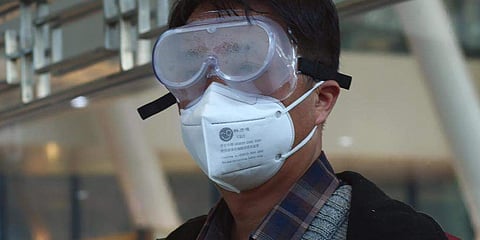

The revised guidelines of the WHO regarding mask-use in the context of COVID-19 states that children below the age of 5 years should not wear masks and vulnerable people to use only surgical masks in public. As per experts, the unsupervised use of masks in children could be harmful as they are not capable of using the mask as per recommendations.
Earlier UNICEF and WHO had stated that anyone who has trouble in breathing or unconscious or unable to remove the masks without assistance should not be allowed to wear them. "Very young children are less susceptible to the virus and are less likely to spread it to others. But the risk involved is high if one is not careful while using the masks. As per the guidelines of the WHO, there are series of steps to be followed while using the masks that include do not touching the front portion of the mask and wearing them after applying hand sanitisers, and so on. In the case of the children, it is very difficult for them to understand and follow them. If the masks are not handled properly then the risk of infection is higher," said a pulmonologist based in Kochi.
As per WHO, children between 6-11 years of age, a risk-based approach with regard to the transmission of COVID-19, child's capacity to comply with the appropriate use of masks and availability of appropriate adult supervision and so on, should be applied to the decision to use a mask. While those above the age of 12 years should follow the same principles as adults.
Also, the WHO has stated that those belonging to the vulnerable category should wear only surgical masks instead of cloth masks in public places. And also people should not wear masks during vigorous-intensity physical activity because masks may reduce the ability to breathe comfortably. If the activity takes place indoors, adequate ventilation should be ensured at all times through natural ventilation or a ventilation system. Studies has suggested that asymptomatically infected individuals are less likely to transmit the virus than those who develop symptoms. It is estimated that there is a 42 percent lower relative risk of asymptomatic transmission compared to symptomatic transmission.
